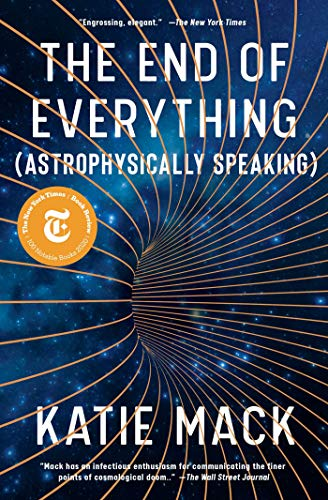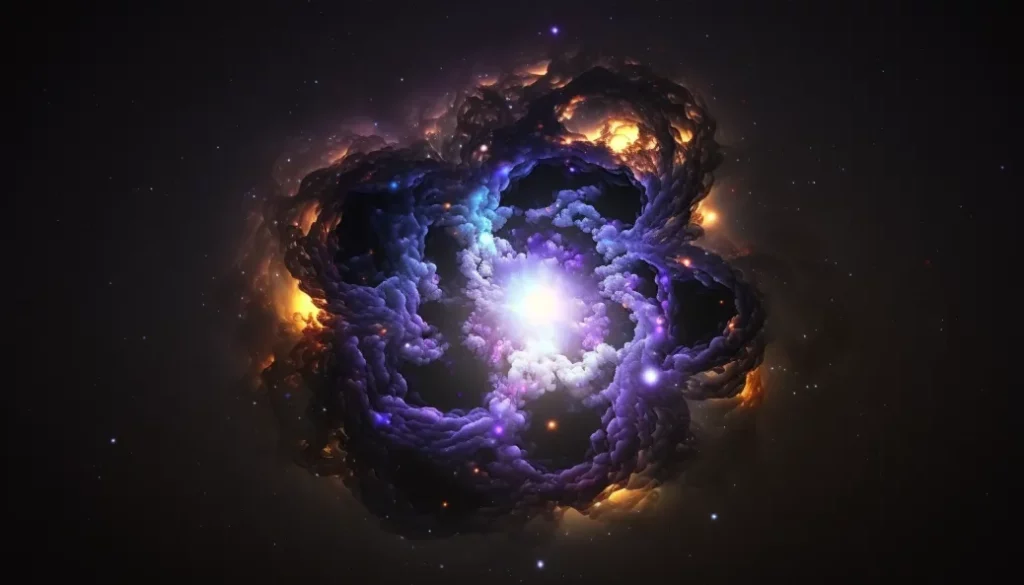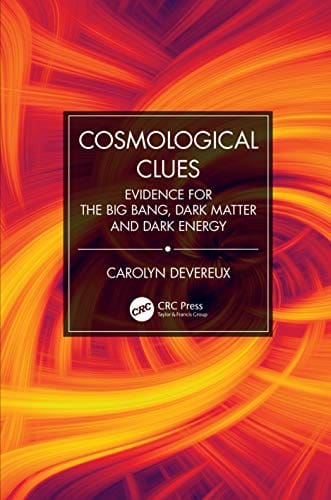Dark matter is made up of particles that don’t absorb, reflect, or give off light. This means that electromagnetic radiation can’t be used to find dark matter. Dark matter is a substance that can’t be seen by the naked eye. We know that dark matter exists due to its effect on things we can see with our own eyes.
This article is best for people who want to explore more about dark matter and books that explain it in detail. We will review the best books on dark matter.


Are you interested in exploring dark matter? If yes, then you are in the right place. We have reviewed the 21 best books on dark matter below:


From one of the most inspiring rising stars in astrophysics comes an easy-to-read and eye-opening appearance at five aspects of how the universe could end and the mind-blowing lessons every situation teaches about the most important ideas in cosmology.
We know that the universe had to start somewhere. With the Big Bang, it went from a state of unthinkable density to an all-encompassing cosmic fireball to a simmering fluid of matter and energy. This set the stage for anything from black holes to one rocky planet orbiting a star near the edge of a spiral galaxy, where life as we know it happened.
No products found.
But at the conclusion of the story, what happens to the world? How does this affect us now? Dr. Katie Mack has been thinking about these questions ever since her astronomy teacher told her that the universe could end at any time, in a moment, when she was a young student. Because of this, she decided to study theoretical astrophysics.
Now, she takes us on a mind-bending tour of five possible ways the universe could end: the Big Crunch, the Heat Death, the Big Rip, Vacuum Decay (which could happen at any time! ), and the Bounce. The End of Everything is a crazy, surprising ride to the end of everything we know. It takes us through cutting-edge science and major ideas in quantum physics, cosmology, string theory, and more.


Liu Cixin, a Chinese author, wrote the science fiction book named “The Three-Body Problem.” The title refers to an issue in orbital mechanics called the “three-body problem.” It is the first book in the trilogy Remembrance of Earth’s Past, but the whole thing is often called Three-Body.
The Dark Forest and Death’s End are the second and third books in the trilogy. The books in the series show a fictional past, present, and future. In the first book, Earth meets an alien civilization in a nearby star system with three sun-like stars that orbit each other in an unstable three-body system.
No products found.


Get ready to learn everything about our bizarre and mysterious universe that we still don’t know. There are many things that humans don’t know about the physical world. There aren’t just small holes in our basic ideas about how the world works; there are huge, gaping holes. Jorge Cham, the creator of Ph.D. Comics, and Daniel Whiteson, a particle physicist, have joined forces to look over everything we don’t know about the world: the huge gaps in what we know about the cosmos.
With their famous visualizations, cartoons, and unusually entertaining and clear understandings of science, they give us the best answers to many questions that still stump scientists, such as:
Why does the universe have a speed limit?
Why aren’t we all made from antimatter?
What (or who) is assaulting the Earth with tiny particles that move very quickly?
What is dark matter, and why does it ignore us?
No products found.
It turns out that there are lots of strange things in the universe that just don’t make sense. But Cham and Whiteson make a strong case that the doubts we can’t answer are just as exciting as the ones we can. This fully presented introduction to physics’s biggest mysteries also helps make sense of things we do know, like quarks, neutrinos, gravitational waves, and black holes that explode.
Cham and Whiteson encourage us to see the universe as a possibly infinite expanse of uncharted territory that is still ours to explore. They do this with a perfect blend of humor and joy.


From a famous theoretical physicist comes a trip into the world of particle physics and the cosmos, along with a call for science to be fairer. In The Disordered Cosmos, Dr. Chanda Prescod-Weinstein talks about how much she loves physics.
She talks about the Standard Model of Particle Physics and what lies beyond it, the physics of melanin in the skin, and the latest theories of dark matter, all with a new spin that is influenced by history, politics, and Star Trek.
Dr. Chanda Prescod-Weinstein is one of the best physicists of her generation. She is also one of fewer than 100 black American women to get a Ph.D. in physics from a department.
No products found.
Her view of the universe is colorful, non-traditional, and full of life. It is based on black feminist traditions. Prescod-Weinstein wants us to see that science, like most other fields, is full of racist, sexist, and other systems that make people feel less important.
She describes a bold new way of looking at science and society that starts with the idea that we all have a basic right to learn about and love the night sky. The Disordered Cosmos imagines a world where everyone can see and learn about the amazing things in the universe.


In the last few decades, a few scientists have been working hard to explain a scary fact about our universe: only 4% of it is made up of the matter that makes up you, me, our books, and every star and planet. The rest is not known at all.
Richard Panek informs us of the compelling story of how scientists tried to find “dark matter” and “dark energy,” which is even stranger. This may be the greatest discovery in all of scientific research, and if it can be solved, it will bring fame, money, and undoubtedly a Nobel Prize.
No products found.
Based on in-depth reporting and interviews with the major players, including Berkeley’s feisty and excitable Saul Perlmutter, Harvard’s witty but exacting Robert Kirshner, and the doyenne of astronomy, Vera Rubin, the book gives an affectionate portrayal of the intense rivalry and productive partnering, the eureka moments and blind alleys, that have driven their search, changed science, and remade the universe.
Things couldn’t be more important. Copernicus was only the start of how wrong our view of the universe is. Not only Earth, but all matter is a small part of existence. This epic story comes to life for the first time thanks to Panek’s fast-paced writing, which is full of actual journalism and behind-the-scenes details.


Since Albert Einstein’s initial presentation of the general relativity theory in 1915, physicists have been investigating, arguing, and challenging it. Many others think that even more miraculous discoveries are waiting to be made within the theory’s knot of equations, which they believe has already revealed some of the universe’s most astounding secrets.
The scientist Pedro Ferreira brings general relativity to life in this sprawling cultural history by telling the tale of the many talented physicists, mathematicians, and astronomers who’ve already taken on the subject. For these researchers, the theory is both a gold mine and a riddle, providing fodder for a century’s worth of rigorous thought and hard work.
No products found.
Despite being perhaps the most flawless scientific achievement of modern physics, researching Einstein’s theory that explains the links between gravity, space, and time has always been a contentious task.
Many of today’s most intriguing scientific concepts, like dark matter, dark energy, black holes, and string theory, may be traced back to Einstein’s work.
The field of modern physics is undergoing a revolutionary change right now. The Perfect Theory shows the expanded significance of general relativity, explaining its origins, its development, and its potential future use at a time when scientists are seeing deeper and clearer than ever before into the cosmos.
According to John T. Cullen, dark energy is nothing but plain old gravity, but with a shocking twist, hence his novel proposal for a new cosmology has been dubbed “Exogravitation.” To challenge cosmology instructors and serious students, the author here presents a Gedankenexperiment (thinking experiment).
No products found.
The Exogravity theory provides an explanation for the accelerating expansion of the cosmos. The best that cosmologists have come up with is the “black box” technique used in engineering. Everything about the conversion or throughput is a mystery to us, but we are aware of the inputs and the outputs.
In accordance with the second law of thermodynamics, it is impossible to generate dark energy from nothing. Who knows where Dark Energy has been hidden for all these years if it exists in the universe? To answer this question, John T. Cullen proposes a whole new theory called exogravitation. No need to conjure up fantastical explanations or unrealistic answers.
Think of it this way instead: the acceleration of a falling object is a natural phenomenon with predictable results. The theory of exogravitation (which means “gravity from beyond”) holds that our world is just one of an infinite number of universes within an infinite motherverse.


Black holes, nerve terminals, the human brain, and the computer’s brain are all visited by the reader. The author spent a great deal of time studying both scientific theory and spiritual teachings in order to produce this work, which provides clear explanations of complex ideas that create and unite the cosmos.
The author emphasizes throughout the book the differences between dark and regular energy, the interplay between the two, and the independent programming of the many components of a computer brain. To put it simply, everything we experience is the result of the interactions of various forms of energy.
No products found.
The Wachowskis’ Matrix films serve as a link between hard science and abstract ideas by depicting a world in which “reality” is an AI-projected simulation. An interesting metaphysical dissertation on the nature of the cosmos and human existence, Life and the Aura of Perpetual Impermanence, sheds light on the nature of our being in the world.


Many cosmological observations relate to the theory that the expansion of the universe in the present day is speeding up, as well as to the idea that the early cosmos had a period of cosmological inflation, often referred to as “exponential cosmic expansion.” It is proposed that dark energy exists to account for this observation.
Dark matter, which does not emit light, is also suggested by the rotational curve of galaxies. The mechanism for actualizing inflation will be made clear if and when primordial gravitational waves are identified in the future. Furthermore, we have two leading possibilities for dark matter.
No products found.
One is a new particle anticipated by the field of particle physics. The second type describes an astrophysical object that cannot be detected using electromagnetic radiation. In addition, there are two main ways to explain the current universe’s fast expansion. One option is to suppose the existence of dark energy, a variable not directly accounted for by general relativity.
The other option is to apply the theory of gravity to extremely large dimensions. One of the most important issues in contemporary physics and cosmology is the study of the origins of inflation, dark matter, and dark energy. The authors set out to examine the physical and cosmological implications of inflation, dark matter, and dark energy in this comprehensive volume.


After validating the faults that cause the Standard Cosmological Model to adopt non-scientific theories like Dark Energy, Dark Matter, and Cosmic Inflation, a new cosmological model is introduced, one that is founded on the principle of exchange between matter and energy provided by the Special Relativity Theory.
Through all the calculations that link matter and energy to motion, we have been able to explain and demonstrate: the origin of the universe; the origin of space-time; the rate of the expansion of the universe; the formation of the first stars; the ongoing formation of galaxies; gravity; stellar and primordial black holes; intergalactic movement; the ultimate fate of our universe; the formation of new Big Bangs; and the fact that we are a part of it all.
Finally, we compare these findings to the corresponding predictions of the General Relativity–based Standard Cosmological Model.
No products found.
Explore the deepest parts of the universe and discover how and why particle confusion was what made matter. As you read it, billions of neutrinos from the sun are going through your body, antimatter is growing out of your food, and the center of your being is a chaotic mess of quarks and gluons.
After the new discovery of the Higgs Boson, Why the Universe Exists dives deeper into the world of particle physics to look at how the universe works on the smallest scales.
Find out about the search for dark matter, how accelerators like the Large Hadron Collider are looping time to the first moments after the big bang, and how gloomy neutrino particles may hold the answers to the biggest questions about the universe.


This book takes you on a trip through the universe when it was just starting out. It tells you about the universe as it is now. It gives the most important scientific theories, such as Einstein’s theory of special relativity and other great scientific ideas. At the end of the book, the author tried to explain some of his ideas about things that science hasn’t figured out yet.
The beginning of the book makes the reader think about what they know about time. From there, the author takes you to a huge universe and tries to describe all the complicated science in the simplest way possible.
The kids will enjoy this book as much as the adults will. The book takes you on a tour of how stars are made and how they die, step by step. The book shows the beauty of a supernova, how dwarf planets or neuron stars are made, and, of course, what a black hole is. The book talks about dark matter and dark energy, and the author explains what he knows about them.
The book looks at both the big bang and the black hole and tries to find a link between them. The author also says what he or she thinks about singularity. The book asks its readers to ponder all the mysteries of the universe that haven’t been answered yet. This book questions many long-held ideas about physics and asks questions in the hope that one day we will all know the answers.


The book talks about some of the most interesting questions in cosmology, like how do we know that the Big Bang started the universe? Is there any evidence that dark matter actually exists? Will we ever figure out what dark energy really is? Are there really many worlds? And could the whole universe be a hologram?
Anyone who wants to learn more about our universe should read this book. It will be interesting to people who are learning about cosmology for the very first time, even those who aren’t scientists but like to look up at the stars and wonder where all of them came from. New findings on the Big Bang, dark matter, and dark energy, as well as other fascinating scientific concepts like inflation and multiverses, are discussed. You can order the paperback on Amazon
Degree in a Book: Cosmology is the best way to learn about cosmology, astronomy, and astrophysics. This book was written by one of the best astronomers and teachers at NASA. It gives you the basic information you need to understand the science behind the world we live in. It will help you answer questions like: How do we know the universe is expanding? What is the theory of relativity? What is the Higgs mechanism? What is the dark stuff?
This book makes it simpler than ever to acknowledge how the universe works. It has useful illustrations, recommendations for more reading, and easy-to-understand sections on history. It covers the whole field of cosmology, including the most important ideas like the Theory of Relativity, the Standard Model, Loop Quantum Gravity, and Supersymmetry.
No products found.
This book is a collection of the latest and most promising theoretical, observational, and experimental advances in the search to find out what dark matter and dark energy are. Now, the Invisible Universe is a valuable and one-of-a-kind laboratory where basic theories of physics, like general relativity and the physics of elementary particles, can be tested in energy ranges that our laboratories on Earth can’t reach.


How did everything start? Where is everything headed? A hundred years ago, Albert Einstein gave the world his general relativity theory, which completely changed how we think about the universe. He changed the way people thought about gravity for hundreds of years by showing that it comes from the way space and time are curled.
Still, general relativity has had significantly bigger effects. It has shown that our universe has indeed been getting bigger since the “big bang,” a time when it was very hot and dense. It’s changed the way we think about space and time.
From leading cosmologists and New Scientists, we have made a lot of progress, but we still have a lot to learn about the universe. How does the dark universe affect the fate of the universe? What really goes on around black holes? Are we any closer to finding the ripples in space and time that Einstein said would be there? Why can’t relativity be the final answer?
This book explains the basic ideas of particle cosmology. It also talks about the Big Bang Model and the hunt for new science. It also includes most of the recent discoveries, such as the precise measurement of cosmological parameters with WMAP and Planck, the exploration of the Higgs boson at the LHC, the fact that supersymmetric particles have not yet been found, and the search by Planck and BICEP for the imprint of gravitational waves on the polarization of the CMB.
This book is based on the authors’ courses on cosmology, and its goal is to teach top students and graduates about particle cosmology. It has been written so that students who don’t know a lot about general relativity and quantum field theory can still understand it. The information in this book is laid out in a way that makes it easy to use, and students will find it beneficial as a research guide.


This book goes over the history of how missing mass (or mass that can’t be seen) was found in the universe and how it relates to proposed additions to the Standard Model of Particle Physics, like Supersymmetry, that was being talked about at the same time.
This book is an introduction to these problems, which are at the cutting edge of astrophysics and particle physics. Its goal is to explain the physics of dark matter to first-year college science majors. The book goes on to talk about experiments and methods that have already been done or will be done to directly or indirectly find dark matter.
In Yale theoretical astrophysicist Priyamvada Natarajan’s book Mapping the Heavens: The Radical Scientific Ideas That Reveal the Cosmos, the author looks at how the rise of modern cosmology and astrophysics has changed the way we think about the universe and our place in it. Natarajan uses the questions at the heart of her research, such as how black holes develop and how to map dark matter, as a way to tell the stories of some of the most important and surprising scientific discoveries.
This book talks about a completely new idea that is given about what “causes” dark matter in the universe. Dark matter is a substance that scientists believe exists in space but for which they don’t have direct proof. (MacMillan Dictionary).
Scientists have found that the universe is made up of 68% dark energy, 27% dark matter, and 5% normal matter by fitting a theoretical model to cosmological observations (NASA’s Newsletter on Science). There are many other definitions with different percentages that try to explain what “dark matter” is in the universe.
The neutrino is described as an extremely small subatomic particle (0.000291) that is made when beta decay happens. This probably explains where some “missing energy” comes from. Neutrinos don’t have any mass or electric charge, and they don’t interact with any known matter. It was called the “ghost particle” when it was first discovered, and it is still called that today.


This book is written from the point of view that cosmology and particle physics are deeply linked. It shows the results and ideas about both the homogeneous and the isotropic universes when they were young and when they were older.
The main chapters explain facts and ideas about the past and the present universe in a way that is both structured and educational. Therefore, the entire approach provides a modern introduction to this quickly evolving scientific topic.
The article is all about the best books on dark matter. If you are a science person and love to explore the universe and everything related to it, then you must read the above-mentioned books on dark matter in 2023.
The books mentioned above describe everything, from the history of the world to its present and future. They also answer some of the most puzzling yet interesting questions about the universe, dark matter, and physics.